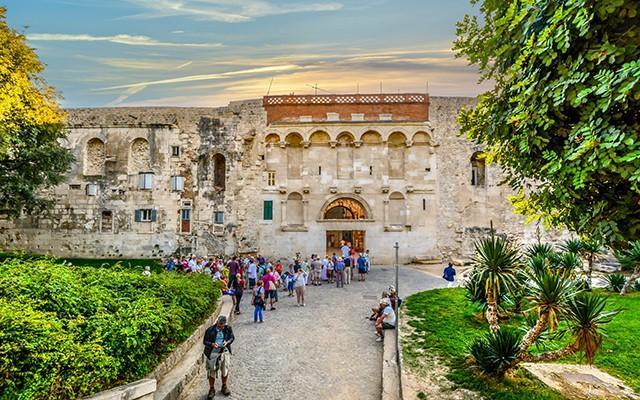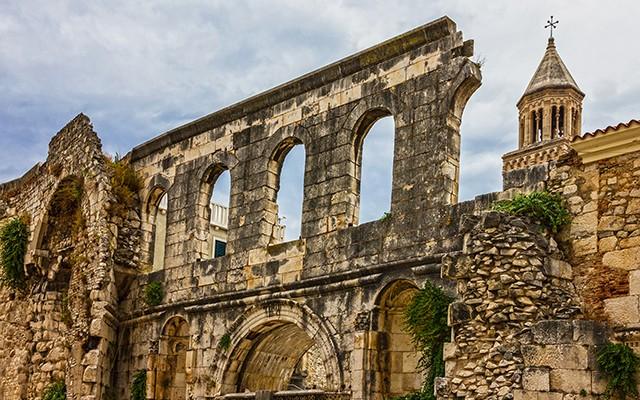Diocletian's palace
Discovering Diocletian's Palace: A Timeless Jewel of Split
History and Significance of Diocletian's Palace
Diocletian's Palace, nestled in the heart of Split, Croatia, stands as a monumental relic of Roman architecture and history. Constructed from 295 to 305 AD for the Roman Emperor Diocletian, this palace was intended as a retirement residence, showcasing the opulence and strategic architectural prowess of the time. Spanning over 30,000 square meters, the palace complex amalgamates luxurious living quarters with military camp structures, illustrating a unique blend of functionality and grandeur.
The palace's significance extends beyond its architectural marvels; it represents a pivotal moment in Roman and Croatian history. As the world's most complete remains of a Roman palace, it has been pivotal in understanding the Roman way of life and architectural innovation. Its preservation and continuous habitation since antiquity have made it a living monument, unlike any other historical site. In 1979, UNESCO recognized Diocletian's Palace as a World Heritage site, underscoring its value to the global community.
Guided Tours of Diocletian's Palace
Moreover, specialized tours cater to diverse interests, from historical and architectural tours to thematic ones focusing on the palace's appearances in popular culture, like the filming locations of the "Game of Thrones" series. These tours not only educate but also entertain, ensuring a memorable experience for all visitors.
Frequently Asked Questions
What is the best time to visit Diocletian's Palace?
Can you stay within Diocletian's Palace?
Yes, several accommodations ranging from apartments to boutique hotels are available within the palace walls, offering a unique opportunity to stay in a historic setting.
Are there any special events at Diocletian's Palace?
Diocletian's Palace hosts various cultural and entertainment events throughout the year, including live music performances, festivals, and historical reenactments, particularly during the summer months.
Is Diocletian's Palace accessible for people with disabilities?
While the ancient cobblestone streets and stairs can be challenging, efforts have been made to improve accessibility. Visitors with mobility issues are advised to research and plan their visit accordingly.
How much time should I allocate for a visit to Diocletian's Palace?
Conclusion: The Timeless Appeal of Diocletian's Palace
Diocletian's Palace embodies the essence of Split's rich history and cultural heritage. Its enduring legacy, from ancient Roman times to the present day, continues to captivate and inspire visitors from around the world. As a cornerstone of Split's tourism industry, the palace not only offers a window into the past but also contributes to the vibrant, dynamic character of the city. Exploring Diocletian's Palace is not just about stepping into history; it's about experiencing the living, breathing heart of Split.
The significance of Diocletian's Palace extends far beyond its historical and architectural value. It embodies the spirit of Split, encapsulating the city's ability to harmonize its rich historical heritage with contemporary life. The palace's enduring appeal lies in its capacity to offer something for everyone - from history enthusiasts and architecture aficionados to casual tourists seeking a glimpse into the past.
As we reflect on the timeless appeal of Diocletian's Palace, it is clear that its importance to Split and the broader world heritage community will continue to grow. It stands as a testament to human ingenuity, cultural diversity, and the enduring power of history to inspire and educate future generations. Visiting Diocletian's Palace is more than a journey through ancient corridors and grandiose chambers; it is an immersive experience that connects us to the enduring legacy of the Roman Empire and the timeless beauty of Split.




Comments